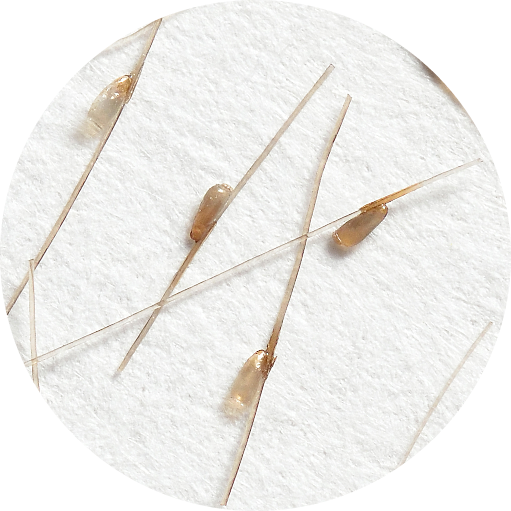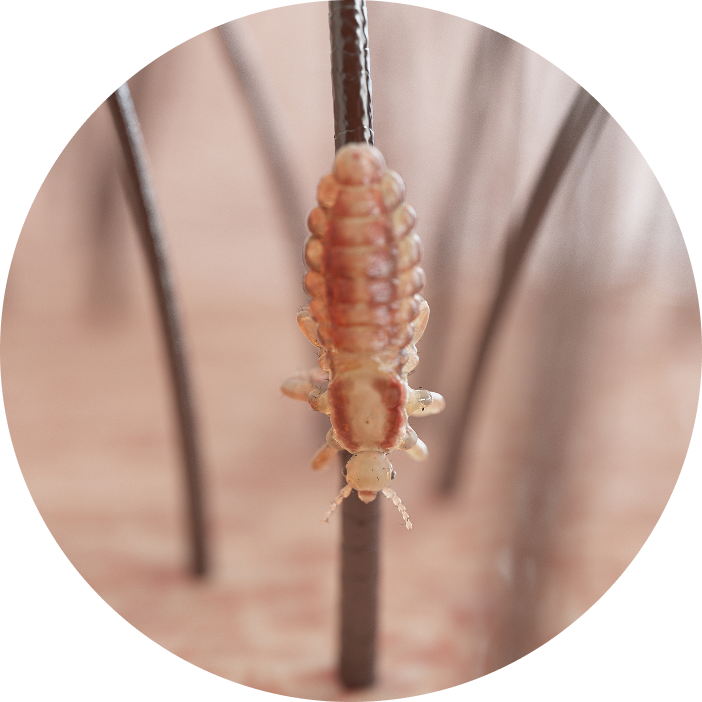The Three Stages
Of Head Lice
The head lice life cycle consists of three stages: eggs, or nits, followed by nymphs, and culminating in the adult louse.
All three stages of a head lice infestation need to be addressed in order to effectively get rid of head lice.
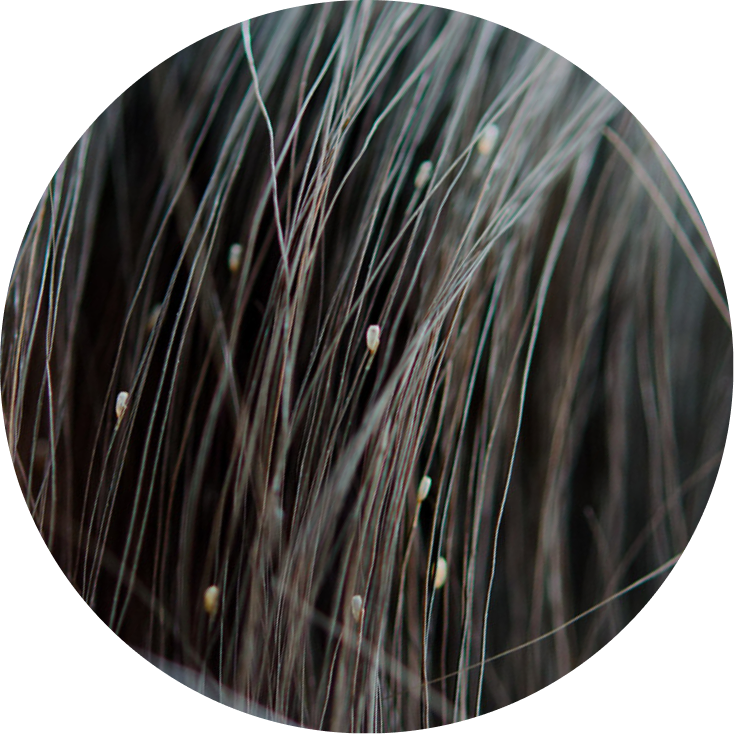

Nymph
Nymphs are the immature lice that emerge from the nits. While they bear a striking resemblance to adult head lice, they are noticeably smaller in size.
As these young lice progress through their growth stages, they undergo a series of moults, shedding their exoskeletons in the process. Throughout this, they continue to rely on the scalp as their primary source for blood meals, which are essential for their development.
This phase of their life cycle typically lasts for around 9 to 12 days. It is within this time frame that the nymphs evolve into fully matured, adult head lice.
The Head Lice Life Cycle
The average head lice, from the time they are laid until they die naturally, lives for around 30 days.
Let’s take a closer look at the developmental timeline as nits hatch and develop into adult head lice.


0 days
The female head lice lay their eggs on individual hair shafts, generally within about 1cm of the scalp. The eggs are known as nits. This is the first stage of the head lice life cycle.


6 - 7 days
Within about a week of the eggs being laid, the juvenile lice begin to hatch. These young, immature lice are known as nymphs and are much smaller than fully mature lice.


11 - 12 days
During this ‘teenage’ stage of development, the young nymphs moult several times. The nymphs shed their exoskeletons in the process each with each moult.


16 - 18 days
During their third week of life, the nymphs mature into adult head lice. At this stage in their development, the male and female lice will begin looking for reproductive partners.
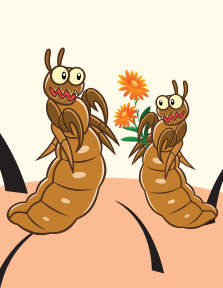

18 - 19 days
Within a few days the male and female head lice have found partners with whom to reproduce, thus continuing the head lice life cycle.
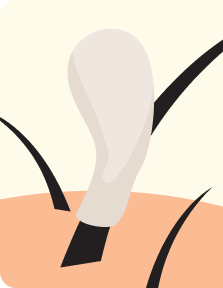

11 - 12 days
The female head lice will lay their eggs towards the end of their third week or during their fourth week of life. The eggs are laid close to the scalp where the temperature is optimal to ensure the survival of the next generation of lice.
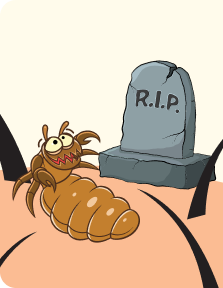

32 - 35 days
Having successfully completed their reproductive cycle, the mature male and female lice will die of old age when around one month of age.

